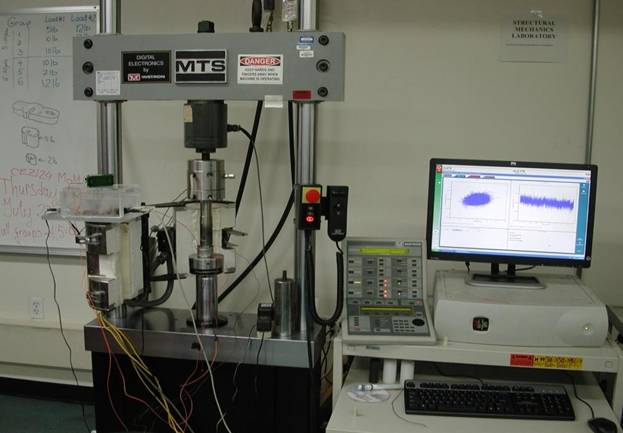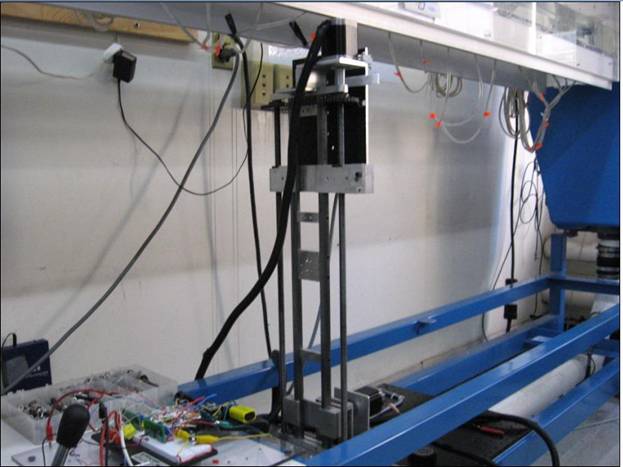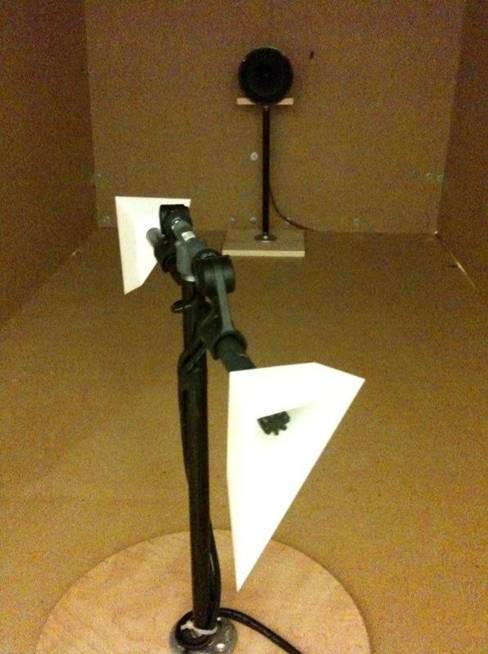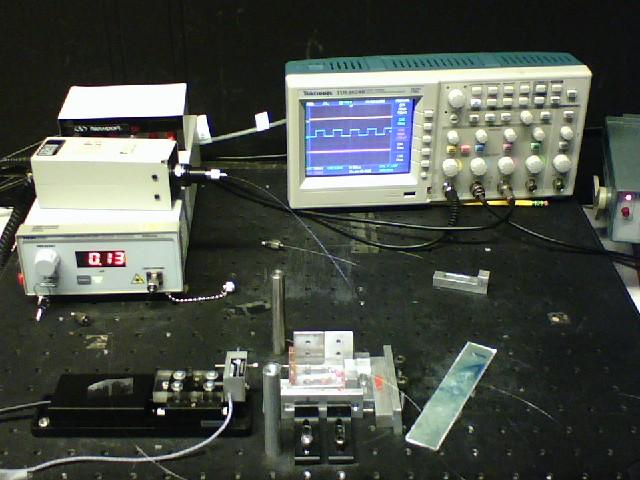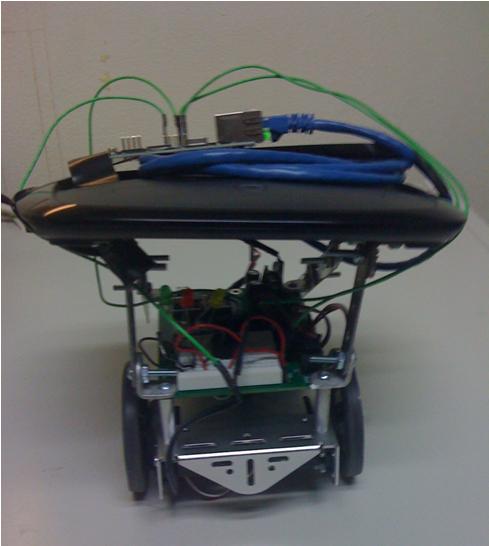2009 SMARTER Program Project Archive
Project 1: Creep Test on HDPE and RFG Using the Stepped Isothermal Method. Temperature Control Instrument
Toufik Ayoub and Leila Cohen
| Presentation Slides | Lesson Plan 1 | Lesson Plan 2 | Poster |
Research
Title: Creep Test on HDPE and RFG using the Stepped Isothermal Method—Temperature Control Instrument
Temperature-induced stresses can be a major concern for reinforced concrete structures in regions of drastic temperature changes. In this research, we developed a mechatronics apparatus to control the temperature of a specimen as it is tested for creep. A load is applied to the specimen while the temperature changes. This apparatus facilitates experimental examination of the effect of combined temperature cycles and different loading rates on the durability of High Density Polyethylene (HDPE) and fiber-reinforced polymer (FRP) specimen bars. Through a series of cyclic temperature variation, we collected experimental data and analyzed it from several aspects: ultimate strength under different loading rates, elastic modulus, fatigue strength, and failure mode analysis.
Lesson Plan
Title: Specific Heat
This lesson will enable students to relate thermal energy to heat capacity by comparing the heat capacities of different materials and graphing the change in temperature over time for a specific material. Students will explore the idea of insulators and conductors in an attempt to apply their knowledge in real world engineering applications.
Project 2: A Micro Controller based design and realization of a two degree of freedom Laser Doppler Velocimetry Traverse System
Henry Penna and Mirlene Leveille
| Presentation Slides | Lesson Plan | Poster |
Research
Title: A Microcontroller-based Design and Realization of A Two Degree-of-Freedom Laser Doppler Velocimetry Traverse System
Laser Doppler Velocimetry (LDV) offers precise measurements of fluid flows regardless of its flow regime. The relatively low cost, ease of use, and expandability of LDV make it suitable for a wide array of fluid dynamic, vibration, and fluid structure interaction experiments. Challenges often faced when interfacing these highly precise optical equipments with physical phenomena is creating a robust, simple, and precise control system. The field of mechatronics blends mechanical, electrical, and computing components together to assist in creating robust control architecture for the particular measurement system. In this research, we developed a novel two degree-of-freedom electro-mechanical optical traverse stage for precisely controlling the motion of a laser probe. A simple method for the calibration of traverse stage was also developed.
Lesson Plan
Title: How does an Electric Relay work?
Relays are used in numerous electric devices. The relays allow low-power control elements, for example, microcontrollers, to actuate electrical devices requiring large current/voltage. In this activity, students will learn about magnetism, electromagnetism, and use of these properties in creating electrically-controlled switches, i.e., relays.
Project 3: Detection and characterization of damage in beams using Chaotic Excitation
Seth Akomah
| Presentation Slides | Lesson Plan | Poster |
Research
Title: Detection and Characterization of Damage in Beams using Chaotic Excitation
Vibration based damage detection methods can be used to identify hidden damages in beam or structural components. In this research, we used a chaotic signal generated from Duffing’s oscillator to excite a beam. We analyzed statistical and chaotic properties of the resulting time series to detect and characterize the crack. Specifically, by performing a systematic data collection and analysis procedure, we have shown that standard deviation and skewness of the time series data can reveal the presence and severity of the surface crack in beam structures. Our theoretical results have been validated by extensive experimentation. Specifically, we have found that the experimental time series data is indeed chaotic and thus amenable for chaotic chrematistics analysis. Moreover, chaotic analysis of experimental time series data has revealed that whereas correlation dimension does not relate with crack severity, the wave fractal dimension yields a good indication of the change in crack severity in the beam.
Lesson Plan
Title: Enhancing Students’ Skills in Inverse Operation using Ohm’s Law
Students will become aware of Ohm’s law which relates current, voltage, and resistance in a circuit. They will learn about series resistive circuits. A number of illustrative problems using Ohm’s law will introduce students to inverse operation and other math concepts.
Project 4: Biomimetic Sound-Localization in the Plane Utilizing Head-Related Transfer Functions
Jason Farina
| Presentation Slides | Lesson Plan | Poster |
Research
Title: Biomimetic Sound-Localization in the Plane Utilizing Head-Related Transfer Functions
In this research, we examined the feasibility of creating a biomimetic system to locate sounds in a plane. A sound measuring system consisting of two microphones with asymmetrical “pinnae” was constructed. To circumvent the need for knowing input sound wave, the ratio of Head-Related Transfer Functions (HRTFs) corresponding to the right and left ear was used for spatial mapping of sound field. Using a least squares matching method and a 72-position (5 degree increments) database, our proposed biomimetic system yields 100% localization accuracy when an actual sound source is located at any one of the 72 positions in the database. Our present coarse database yields less than satisfactory results for adjacency-matching (when actual sound source is between two neighboring locations from database). We intend to improve our database with a finer discretization, which is expected to yield improved and accurate interpolation and adjacency-matching. After demonstrating our biomimetic sound localization technique in the plane, we expect to generalize this approach for sound localization in 3D-space. As previously indicated, the proposed approach obviates the need to know the sound source signal. Furthermore, HRTFs have the benefit of potentially being distinct for all directions, eliminating the front-back ambiguity of strategies utilizing the inter-aural time delay or the inter-aural volume difference.
Lesson Plan
Title: Thinking Like a Researcher—Adding and Subtracting Integers
Students are introduced to “Researcher Habits of Mind.” A few habits are demonstrated to the students, who are then asked to utilize them to better understand the behavior of integers under addition and subtraction.
Project 5: Evaluation of Fiber-Optic Loop-Sensor Mounting on Laminated Glass Fiber Composites Based on Power Modulation
Robert Gandolfo and John Schineller
| Presentation Slides | Lesson Plan | Poster |
Research
Title: Evaluation of Fiber-Optic Loop Sensor Mounting on Laminated Glass Fiber Composites based on Power Modulation
Fiber-optic loop sensors are investigated in this work for a response to load and associated deflection as measured in an optical signal power modulation. The loop sensors are applied in a laminated glass fiber consisting of four or eight layers and tested for repeatability of power output with respect to deflection. The tests use various mounting methods on glass-fiber composite laminated materials or in free space. Of the orientations tested, the most repeatable results are obtained for a loop in free space perpendicular to the plane of the composite and with a load in line with the loop axis. Limited success follows for a compressed loop secured along the plane of the composite with the load perpendicular to the axis of the loop.
Lesson Plan
Title: Simply Supported Beam Deflection
This lesson will expose students to the governing aspects that influence the deflection of a beam. They will do an activity that presents a hands-on approach to the investigation of beam deflection. The lesson will allow students to infer which type of structure is more resistant to bending.
Project 6: iPhone/iPod Touch as a Data Acquisition and Control Device
Lindrick Outerbridge
| Presentation Slides | Lesson Plan | Poster |
Research
Title: iPhone/iPod Touch as a Mobile Data Acquisition and Control Device
In this research, we examined the feasibility of using mobile devices such as iPhone/iPod Touch for wireless data acquisition and control. We began by developing an experimental prototype consisting of a mobile robot that is remotely controlled over a WiFi network using an iPhone. The prototype consists of: i) a mobile robot interfaced with a low-cost microcontroller, Parallax’s 40-pin Basic stamp 2 (BS2P40) which additionally consists of a test circuitry of 3 LEDs and a piezo speaker, ii) an embedded web server, Parallax Internet Netburner Kit interfaced with BS2P40, iii) a Cisco Wireless-G Broadband Router, and iv) an Apple iPhone 2G. The robot and the test circuitry connected to the BS2P40 interface with the embedded web server and the wireless router. The iPhone connects to the wireless network, allowing the user to interact with a graphical interface to control the mobile robot in real time. The graphical interface includes sliders and pushbuttons to turn LEDs, piezo speaker, robot servos, etc., on or off. Finally, the BS2P40 microcontroller can also send status information to the iPhone.
We are now working with iRobot’s Create robot development platform, which uses an Atmel Atmega168 controller, to develop and demonstrate our iPhone-based wireless data acquisition and control system. In particular, we are using a MAKE controller, which allows the implementation of the open sound control (OSC) protocol over the UDP/IP ports, to wirelessly communicate with native iPhone applications over a WiFi 802.11 b/g network. The command/data transfer from iPhone to Atmega168 is being accommodated by hardware-level interfacing of Atmega168 and the Make controller. That is, native iPhone applications transmit/receive OSC messages to/from the MAKE controller, which relays the same to the Create via Atmega168. Currently, we are studying methods to send bundles of OSC messages bi-directionally between Apple devices and the MAKE microcontroller. This framework will ultimately allow the iPhone/iPod to receive, process, record, and display digital/analog sensor data sent from the robot. Furthermore, it will allow the iPhone/iPod to convey user commands to the robot.
Lesson Plan
Title: Making Sense of the iPhone Sensors
This lesson will introduce students to a description of electromechanical sensors. An investigative study will be conducted to examine and compare human sensors, e.g., students will compare eyes, skin, and ears with electromechanical light, touch, and sound sensors. Next, students will consider the Apple iPhone and investigate the special sensors embedded in it. This lesson will create awareness among students that increasingly sensors are becoming pervasive in our everyday lives and therefore.
